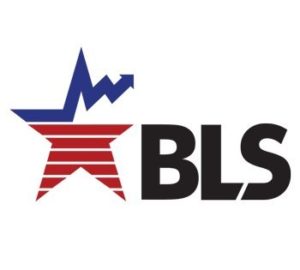As posted on FosterEDU
How to Work Together to Encourage – and Better Train – Workers Sitting on the Side Lines of a Full Employment Economy
The Labor Department’s latest monthly jobs report, this one covering March 2018, was out on the street Friday. And frankly, not a lot has changed: the unemployment rate was 4.1 percent for the sixth consecutive month, and the number of unemployed persons, at 6.6 million, also did not budge much.
Those are the numbers that usually grab the headlines, as well they should. But a deeper look inside the monthly jobs report reveals an essential opportunity where Penn Foster, and others like us that are operating in the adult upskilling marketplace, can really make a difference, and maybe even offer some inspiration for career mobility.
One of those nooks and crannies of the jobs report leads to an especially worrisome statistic. The 1.3 million “long-term unemployed” (those jobless for 27 weeks or more) was little changed in March and overall accounted for 20.3 percent of the total number of Americans unemployed.
Now it is true that over the course of the past year, the number of long-term unemployed is down by 338,000. But the reality is that much more can be done, especially with a concerted effort to close their skills gap and better define re-entry paths.
The data is overwhelming that in high-growth occupation industries like hospitality and skilled trades, the need for trained middle skilled workers is increasingly robust. However, many middle skilled workers do not have all the skills they need or access to the requisite skill building to transition from prior careers. This lack of trained skilled workers has created this middle skills gap which hurts employers, businesses, employees and, ultimately, job seekers, keeping this long-term unemployed number alarmingly high.
The labor force participation rate, at 62.9 percent, changed little in March, and the employment-population ratio held at 60.4 percent. As a country, we seem to have come to accept those numbers as business as usual, which is unfortunate. Wouldn’t it be better if every able-bodied American wanted to participate in the labor force and had the skills training available to them to make a meaningful impact?
Another “inside indicator” was also little changed in March, and that is the number of persons employed part-time for economic reasons (sometimes referred
to as involuntary part-time workers) which remained stuck at 5.0 million. These individuals, who would have preferred full-time employment, were working part-time because their hours had been reduced or because they were unable to find full-time jobs.
Historically, many have looked at this involuntary part-time worker number and considered it too much of an “at risk population” to engage. This should not be the case. These workers are in fact the ones employers and training should be targeting as they are an under-served part of the economy that is in desperate need of options, access and affordability.
Additionally, another little-noticed aspect of the monthly jobs report counts those who are “marginally attached to the labor force,” which in March 2018 totaled 1.5 million persons – only a slight difference from a year earlier. Think about it: these individuals were not in the labor force, wanted and were available for work, and had looked for a job sometime in the prior 12 months. However, they were not counted as unemployed because they had not searched for work in the 4 weeks preceding the survey.
By targeting this group to come back to the labor force, employers could derive a wealth of benefits, from higher employee engagement and productivity, to strengthening and building the pipeline of talent. These productivity and engagement benefits haven’t traditionally been sought out by employers, but it is heartening, however, to see there is a growing shift in focus as organizations are awakening to the importance of education-as-a-benefit for attracting and retaining middle skills training.
Among the “marginally attached” number, there is one group – or at least one label for a group – that most troubles leaders. According to the Bureau of Labor Statistics, there were 450,000 “discouraged workers” in March, essentially unchanged from a year earlier. Who are discouraged workers as defined by the feds? They are persons not currently looking for work because they believe no jobs are available for them.
Progressive leaders agree that the time has finally come to better engage and serve the “discouraged worker,” that “involuntary part-time worker,” and everyone else who is “marginally attached to the labor force.” It is part of the awakening that is manifested by a shift from training and development focused only on top managers in white collar positions to one that recognizes the importance of the middle skilled workforce.
Without better engagement and options for middle skilled workers, most employers’ will be constrained in terms of productivity and growth – as will the overall American economy.

